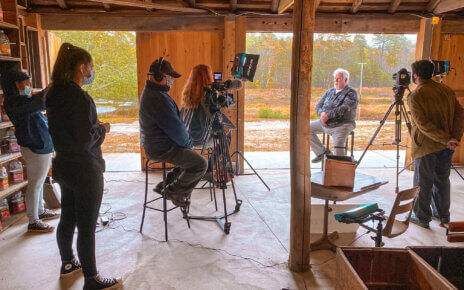Scott A. Jeffrey, Ph.D., Associate Professor in the Department of Management and Leadership, alongside Jonathan A. Daigle, Ph.D., MBA, Assistant Professor in the Department of Economics, Finance, and Real Estate, gave a virtual presentation titled “ESG (Environmental, Social & Governance) Investing: Truth or Fiction?,” on Monday, Oct. 4.
The brief lecture was part of the University’s “Wake Up to Climate Change” Climate Crisis Teach-In, informing listeners of the process of socially responsible investing.
“We’re going to talk about socially responsible investing and give you a sort of heads or tails of this,” Jeffrey said. “I’m going to start with some of the good things that have come about, and [Daigle] is going to tell us why we have to be careful. Not necessarily why it’s a bad thing, but why we have to be careful about it.”
Socially responsible investing (SRI), is an investing strategy that aims to complete both social change and financial returns for an investor, Jeffrey explained. It is often viewed through the lenses of environmental, social, and government, which factors into the ESG scores that are given to companies.
“The goal is to invest in companies with high ratings in environmental, social,and governance factors,” Jeffrey said.
The process began in 1990 with the Domini index, now known as the MSCI KLD 400 Social Index. “It’s a 30 trillion dollar market, and 1 out of every 3 dollars of investment is invested in a socially responsible fund,” Jeffrey said.
Jeffrey then explained how stocks are chosen for the funds. “First, is a screening,” Jeffrey said. “[The index] takes themselves out of any industry that is inconsistent with their values. They do not invest in alcohol, tobacco, gambling, weapons, firearms, nuclear power, adult entertainment, or GMOS. This is just the KLD index. There are some funds that do invest in some of these.”
There are many issues between the ESG ratings and their metrics, Daigle began to explain.
All submitted data is voluntary and self-reported, Daigle said. “Each company gets to decide what things they want to talk about, and then they also get to figure out what peers they want to use for benchmarking. Which can have drastic implications for their actual ESG score.”
Daigle cited a Harvard study that looked at the “Employee Health and Safety” factor of 50 large companies. The study found the factor being described 20 different ways, with 3 different methods as to how the factor is calculated and measured.
“You end up having to question, do you measure employee health and safety with an injury rate, [or] the number of accidents with fatal consequences, or do it with financial loss,” Daigle said. “You don’t have an apples to apples comparison.”
Problems occur with how companies complete their internal benchmarking, Daigle explained. An example was provided from the aforementioned study, displaying a company’s metric for how they measure the percentage of women in the workforce.
Depending on which groups the company uses as their top mark for diversity, they can change public perception by associating with either peer group A or peer group B. One group implies the company is below average, while the other can imply they are above. This allows the company to appear to be within the top quadrant of diversity within their industry.
When companies do not include the data, the ESG rating agencies will try to seek the data from another place. Usually, it is inconsistent, Daigle explained.
“No one actually checks the validity of [the data],” Daigle said. “It’s difficult to spot what’s actually being omitted. It’s difficult to verify any claims and you could have potentially incorrect figures that are provided to the general public.”
The final issue is how easily companies can game the system, which has little to do with the factors themselves. This opens up the door for greenwashing, Daigle said, as companies give a false sense of sustainability.
“What’s happening is you’re just good at social and governance, you’re not good at environmental. Basically, bolster up social and governance to the point where you’re really good at them, so it makes your environmental prospects look not so bad.”



